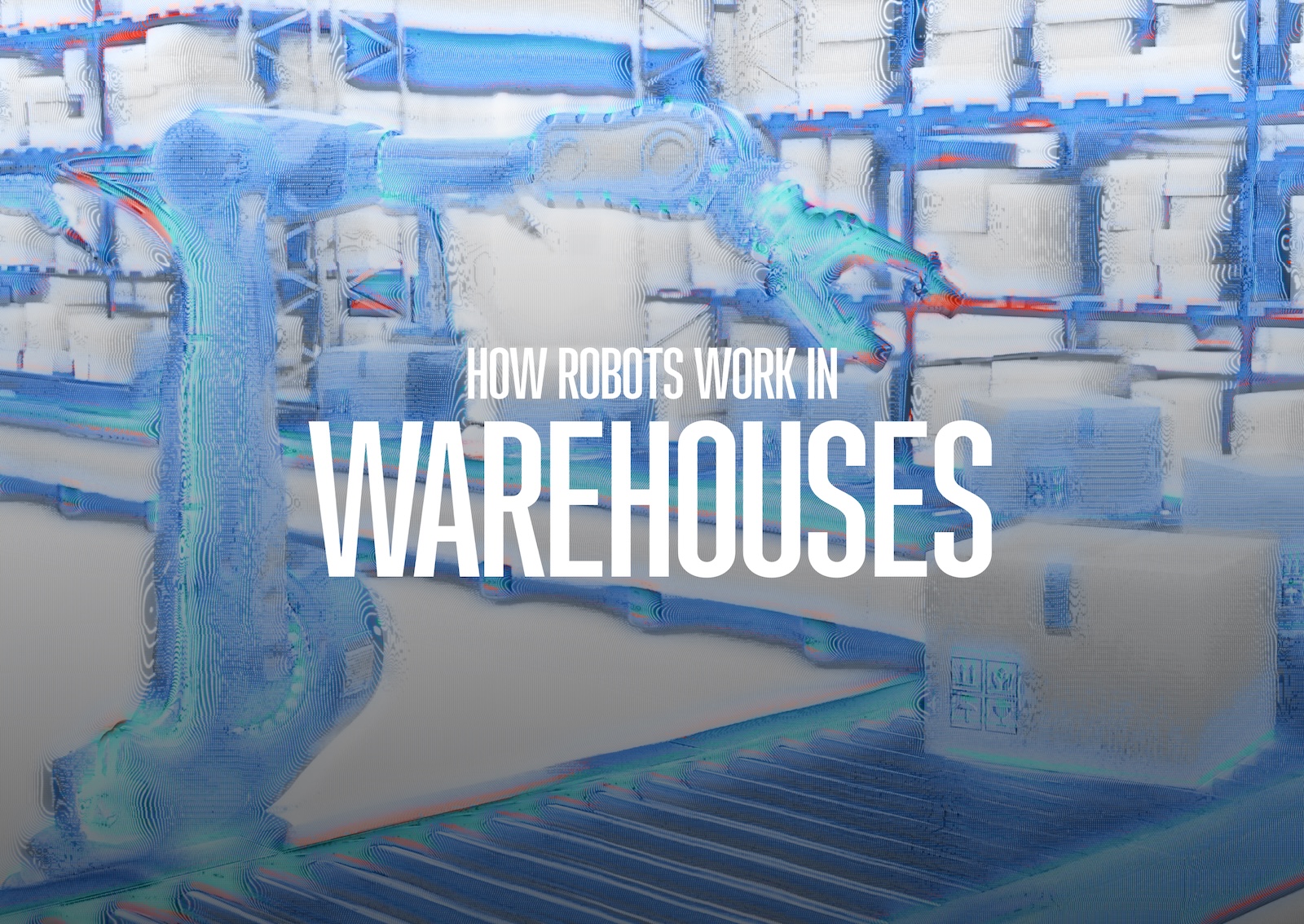

We think of robots in warehouses as a fairly new invention, but in fact they have been around for almost 80 years. The first robot, called Unimate #001, was employed in General Electric back in the 1950s.

But back then, a robot in production or in a warehouse seemed more of a gimmick, and could hardly compete with humans in speed or agility. But today, automated devices in warehouses are a major technology without which it is hard to imagine the modern world.
In 2022, Robin's robotic warehouse system alone processed more than 1 billion orders without error. Let’s look at a couple of specific tasks performed by robots — with the help of AI for warehouse management.
First of all, robots in the warehouse facilitate the movement of goods: from the storage area to the sorting area. Previously, Predetermined paths technologies were used for these tasks (for example, self-moving devices used magnetic strips on the floors).

Robots also use LiDAR — laser location devices — for orientation. With the help of the lidar, the robot navigates its way, avoiding obstacles and other self-moving devices (or people).
The laser scanner mounted on a vehicle can detect special reflectors mounted in the operating environment or reflect off of natural features in the warehouse (e.g., walls, racks, pallets, boxes, other vehicles). The robot uses the distance and angle of the reflected beams to calculate its position and orientation in the environment.

However, such technology also has disadvantages. For example, robots may lose orientation if the beam is blocked. The system is not flexible or robust to environmental changes.
Today, SLAM (Simultaneous Localization and Mapping) technology is increasingly used. Thanks to the joint work of lidars and cameras, the robot can move freely in space, while "seeing" not only a flat picture of the floor, but also a 3D scene (e.g. warehouse shelves too).
Thanks to navigation systems, robots in the warehouse take over the labor-intensive task of moving items. For example, Amazon's autonomous robot Proteus moves carts and pallets of cargo by raising them above floor level (just like the forklift would do).

Another important task for robots is sorting objects. For example, we need to assemble an order that consists of three items: A, B and C. The warehouse robot powered by AI needs to find these items in the boxes and put one of each in a separate box.

The devices use computer vision and artificial intelligence technologies to collect items. Several cameras mounted above the robotic arm find an item in a box and help the arm grab it with a sucker arm.A calibration pattern is placed on the arm to refine the positioning of the arm and to deal with errors accumulating while in use.
In addition, robotic arms are often used not only for order picking, but also for reverse sorting: for example, sorting returned goods.
In modern warehouses, the tasks of sorting and moving goods are often combined. Each robot serves as a "self-moving shopping cart" — it is loaded with several items of an order in sequence, and then it drops the items into one of the many trays, through which they are put into a parcel — and then sent to the customer.

For example, this is how South China Morning Post's automated warehouse works — robotic carts sort through and move more than 200,000 parcels every day. This is what real AI in a warehouse looks like!
There are other tasks for computer vision and artificial intelligence in the warehouse.
Work safety. Thanks to CV, it is possible to automatically detect the presence of humans and stop the process — because it would be unsafe to work together with robots.
Inventory management. Artificial intelligence helps to better load boxes and containers by automatically detecting voids or helping to quickly select the right packaging.
Quality control. Damaged items can be identified and rejected during the sorting process, preventing them from being sent to customers.
We at OpenCV.ai can help your warehouse become automated — our computer vision technology can help with storage, sorting and order processing
